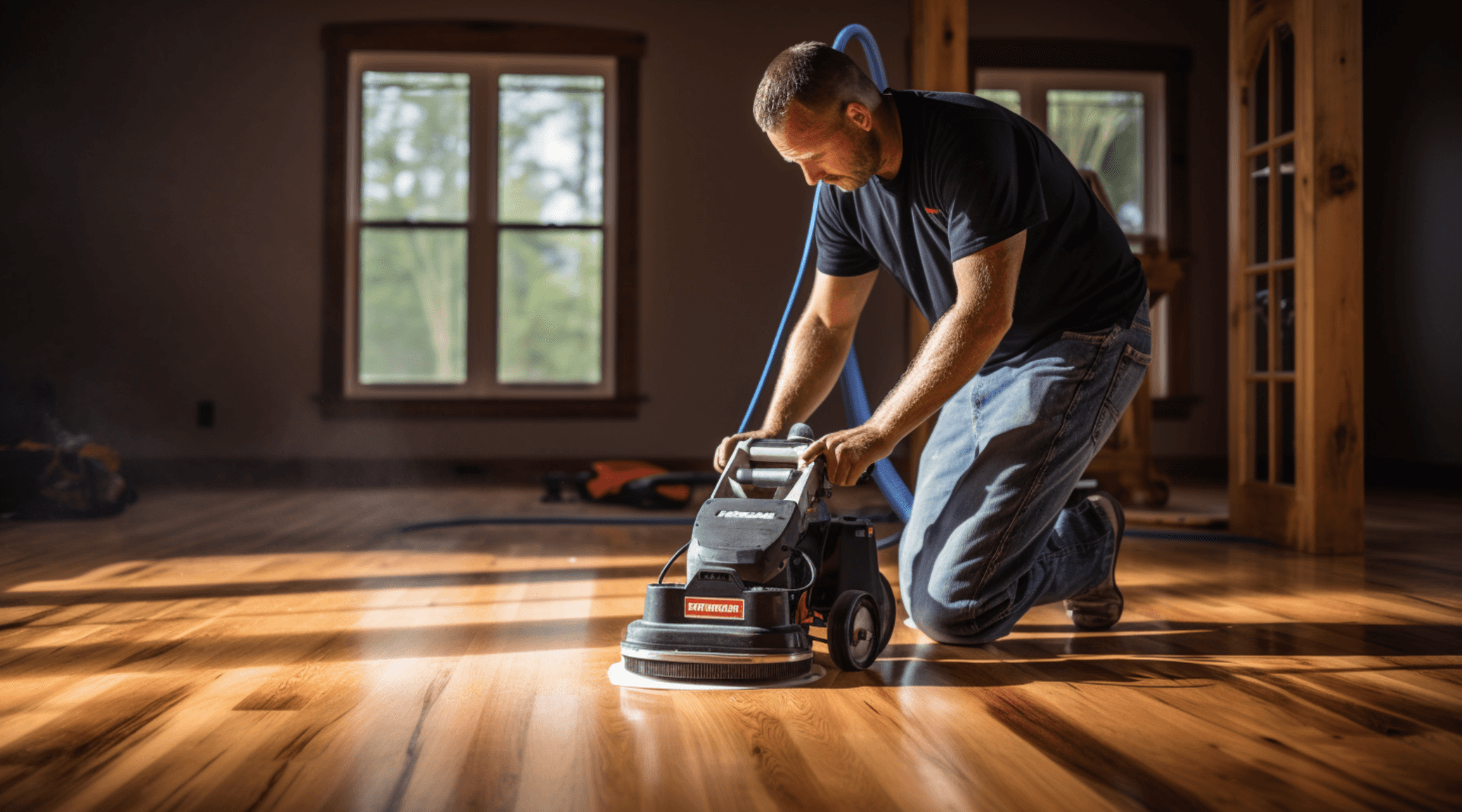Understanding the Process of Sanding and Refinishing Wooden Floors
Sanding and refinishing wooden floors is a process that involves removing the existing finish, sanding the wood to a smooth surface, and applying a new finish. This process is necessary for wooden floors because it helps to restore the beauty and value of the floor, as well as protect it from future damage.
The sanding process begins by removing the existing finish with a drum sander. This is followed by a finer sanding with an edger sander to ensure a smooth surface. Once the sanding is complete, the floor is vacuumed and wiped down to remove any dust and debris.
The next step is to apply a new finish. This can be done with a variety of products, such as wax, oil, or polyurethane. Wax finishes provide a natural, matte look and are easy to apply. Oil finishes are more durable than wax and provide a natural, matte look. Polyurethane finishes are the most durable and provide the highest level of protection.
The benefits of sanding and refinishing wooden floors are numerous. It helps to restore the beauty of the floor, making it look like new. It also helps to protect the floor from future damage, ensuring that it remains in top condition for years to come. Additionally, it can help to increase the value of your property, making it more attractive to potential buyers. The use of materials such as wood fibre, glass wool, PUR, or PIR can provide insulation and protection from moisture, further enhancing the benefits of the refinishing process.
The Average Time it Takes to Sand and Refinish Wooden Floors
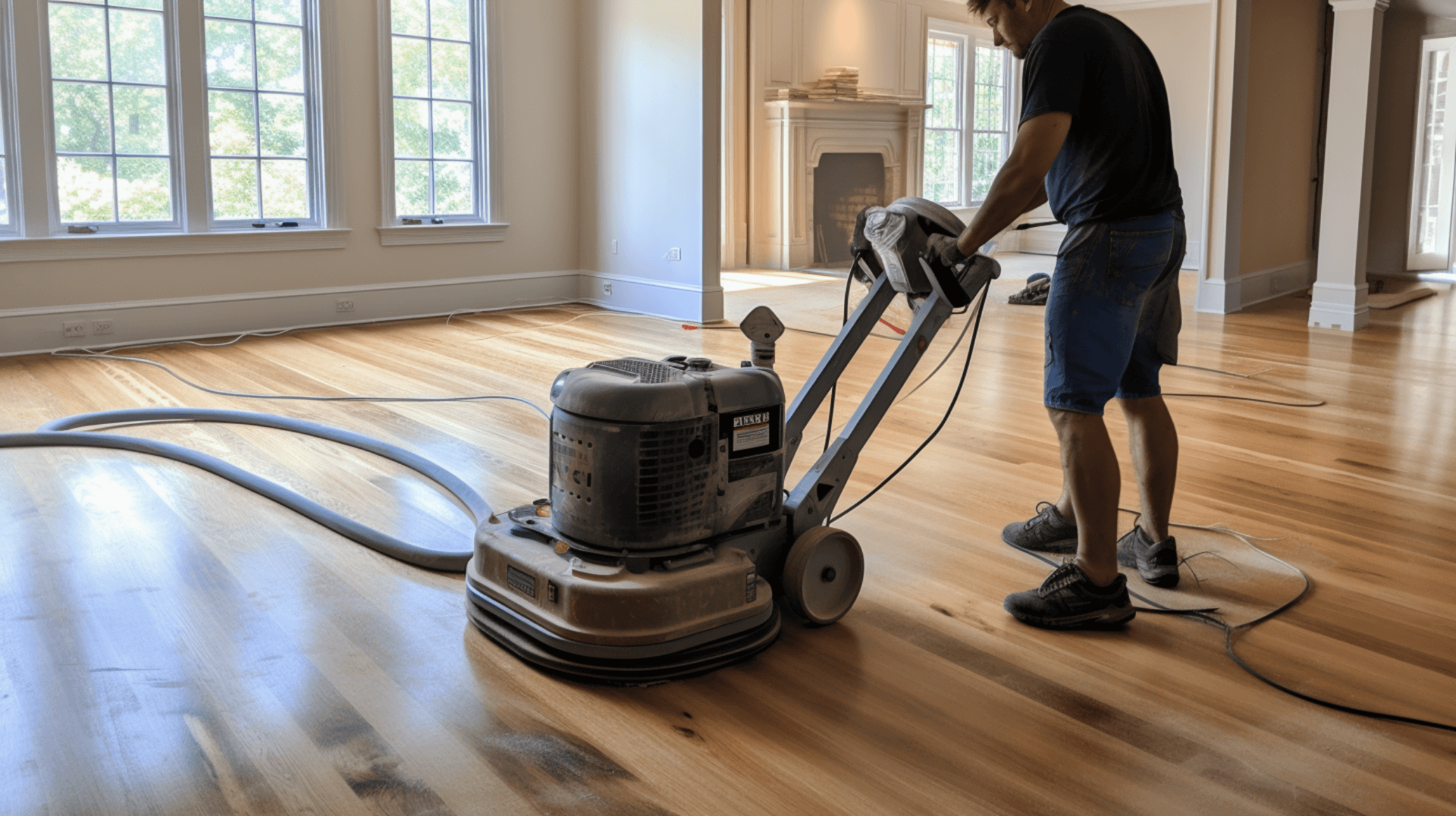
The average time it takes to sand and refinish wooden floors can vary depending on the size of the floor area and the type of wood. On average, it takes around 8-10 hours to sand and refinish a standard-sized room, which is approximately 15m2. larger rooms may take up to two days to complete, while smaller rooms can be finished in a few hours.
The type of wood also affects the time it takes to sand and refinish. Harder woods, such as oak, require more sanding to achieve a smooth surface and may take longer to complete compared to softer woods like pine. Additionally, the type of finish used can also impact the time it takes. Wax finishes are quicker to apply, while oil and polyurethane finishes may require more time for proper application and drying.
It’s important to consider that these are average times and can vary depending on the specific circumstances of each project. Factors such as the condition of the floor, the desired finish, the type of floor construction, and any additional repairs or treatments needed can also affect the overall time it takes to sand and refinish wooden floors.
Factors that Affect the Time it Takes to Sand and Refinish Wooden Floors

Factors that Affect the Time it Takes to Sand and Refinish Wooden Floors:
The time it takes to sand and refinish wooden floors can vary depending on several factors. These factors include the size of the floor area, the condition of the floor, the chosen finish, the type of wood, and the type of floor construction.
The condition of the floor is an important factor that can affect the time it takes to sand and refinish. If the floor is in good condition, the sanding process will be quicker and easier. if the floor is in poor condition, it may require more sanding and repairs, which can add to the overall time it takes to complete the project.
The chosen finish can also impact the time it takes to sand and refinish. Wax finishes are quicker to apply, while oil and polyurethane finishes may require more time for proper application and drying. Additionally, the type of wood can affect the time it takes to sand and refinish. Harder woods, such as oak, require more sanding to achieve a smooth surface and may take longer to complete compared to softer woods like pine.
The size of the floor area plays a role in determining the length of the sanding and refinishing process. Larger rooms may take more time to complete compared to smaller rooms.
The type of floor construction can also affect the time it takes to sand and refinish. For example, suspended timber ground floors may require additional steps for proper ventilation and drying, which can add to the overall time.
Overall, these factors should be considered when planning a sanding and refinishing project to ensure that the appropriate amount of time is allocated.
Preparing Your Wooden Floor for Sanding and Refinishing
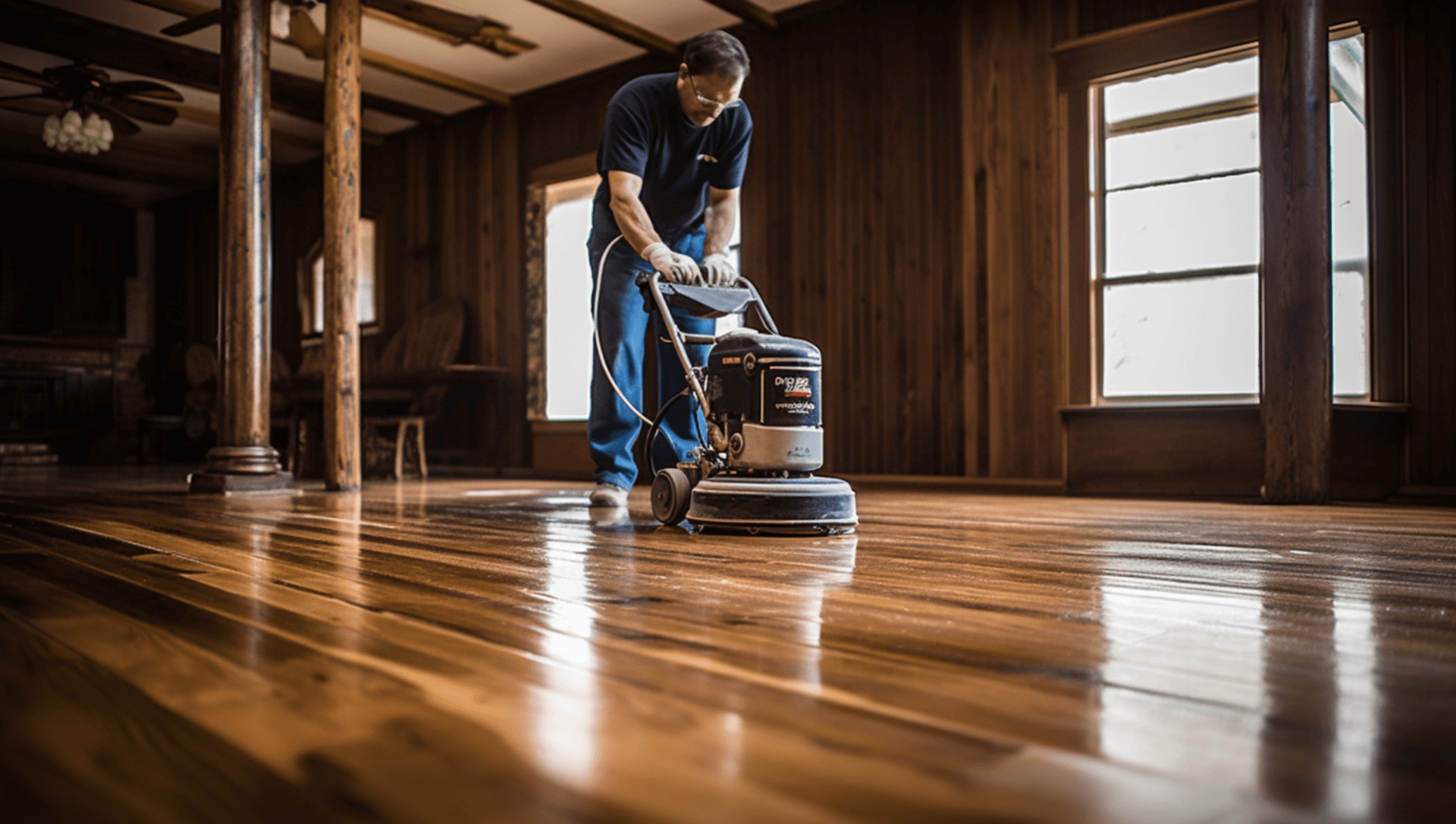
Preparing Your Wooden Floor for Sanding and Refinishing
To ensure the best results when sanding and refinishing your wooden floor, it is important to properly prepare the floor beforehand. Here are the steps you should take to prepare your wooden floor for sanding and refinishing:
- Clear the Room: Remove all furniture, rugs, and other items from the room to ensure that the sanding process is not hindered by any obstructions. Close all doors to other rooms to prevent dust from spreading.
- Clean the Floor: Thoroughly clean the floor to remove any dirt, dust, and debris. Start by sweeping or vacuuming the floor to remove loose particles. Then, use a wood cleaner or damp mop to remove any stubborn stains or dirt. Ensure that the floor is completely dry before proceeding to the next step.
- Inspect for Damage: Carefully inspect the floor for any cracks, holes, or other damage. Repair any damage using wood filler or putty, and allow it to dry completely before sanding.
- Remove Nails and Staples: Check for any exposed nails or staples and use a pry bar or hammer to remove them. This will prevent them from damaging the sanding equipment.
- Take Safety Precautions: When preparing a wooden floor for sanding and refinishing, it is important to take safety precautions. Wear protective clothing, such as goggles, gloves, and a dust mask, to protect yourself from dust and debris. Ensure that the room is well-ventilated and that any electrical equipment is properly grounded.
By following these steps and taking the necessary safety precautions, you can ensure that your wooden floor is properly prepared for sanding and refinishing. This will help to achieve the best possible results and ensure the longevity of your newly refinished floor.
The Sanding Process: Techniques and Equipment
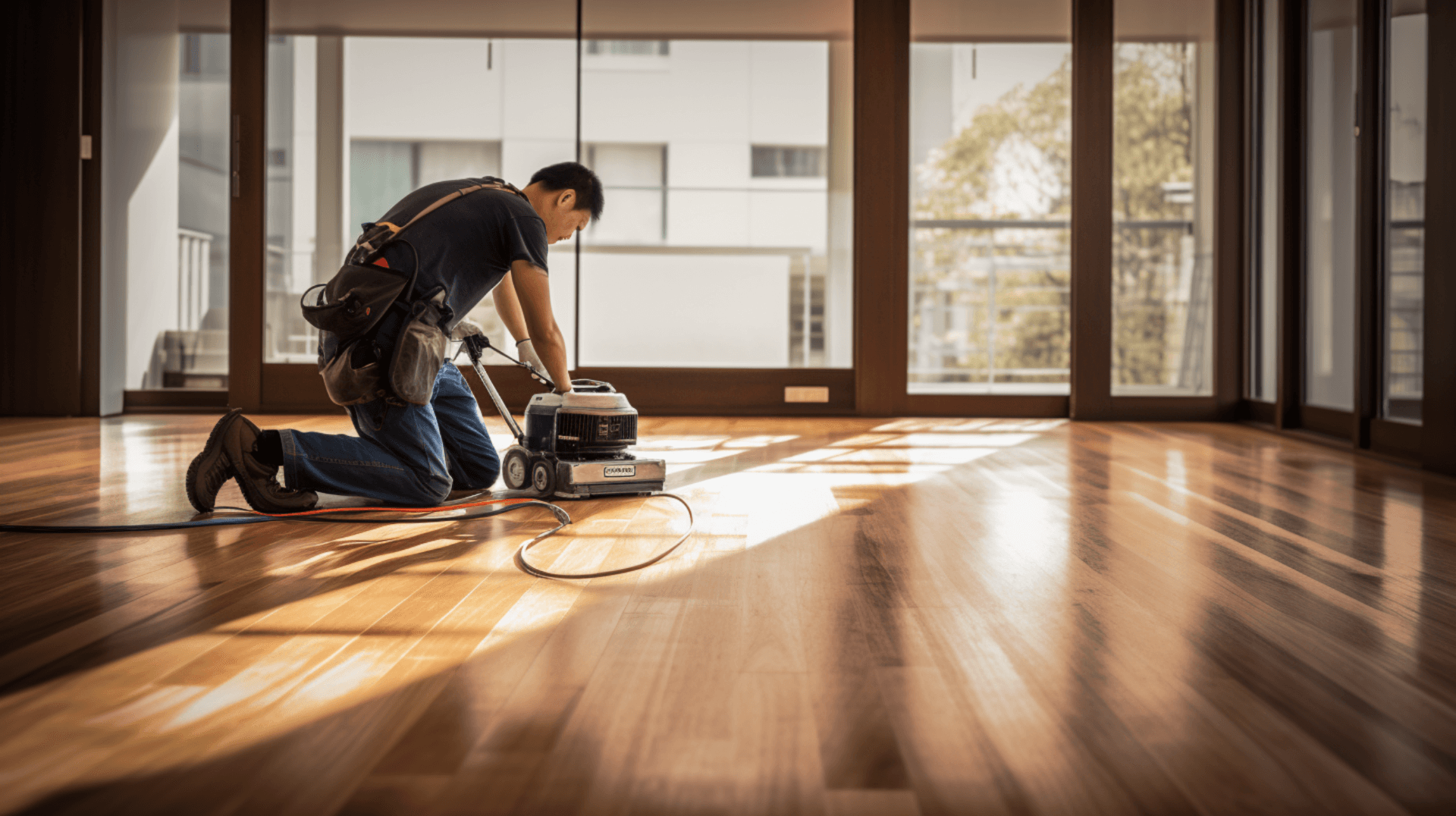
The sanding process for wooden floors requires the use of specialized equipment and techniques to achieve the best results. The most common type of sanding equipment used is a drum sander, which is used to remove the existing finish and prepare the floor for refinishing. An edger sander is then used to sand the edges and corners of the floor, ensuring a smooth surface.
The proper grit sequence for sanding a wooden floor is to start with a coarse grit, such as 40 or 36, and gradually move to a finer grit, such as 100 or 120. This will ensure that the floor is properly sanded and any imperfections are removed. The specific grit sequence may vary depending on the condition of the floor and the desired level of smoothness.
When sanding a wooden floor, it is important to use the correct technique. The drum sander should be moved in a slow, steady motion, overlapping each pass by about a third. This will ensure that the entire floor is evenly sanded and that no areas are missed. The edger sander should be used to sand the edges and corners of the floor, and should be moved in a circular motion. It is also important to keep the sanders moving at all times to avoid creating burn marks on the floor.
By using the proper sanding equipment and following the correct techniques, homeowners and business owners can achieve a smooth and beautifully refinished wooden floor.
The Refinishing Process: Techniques and Materials
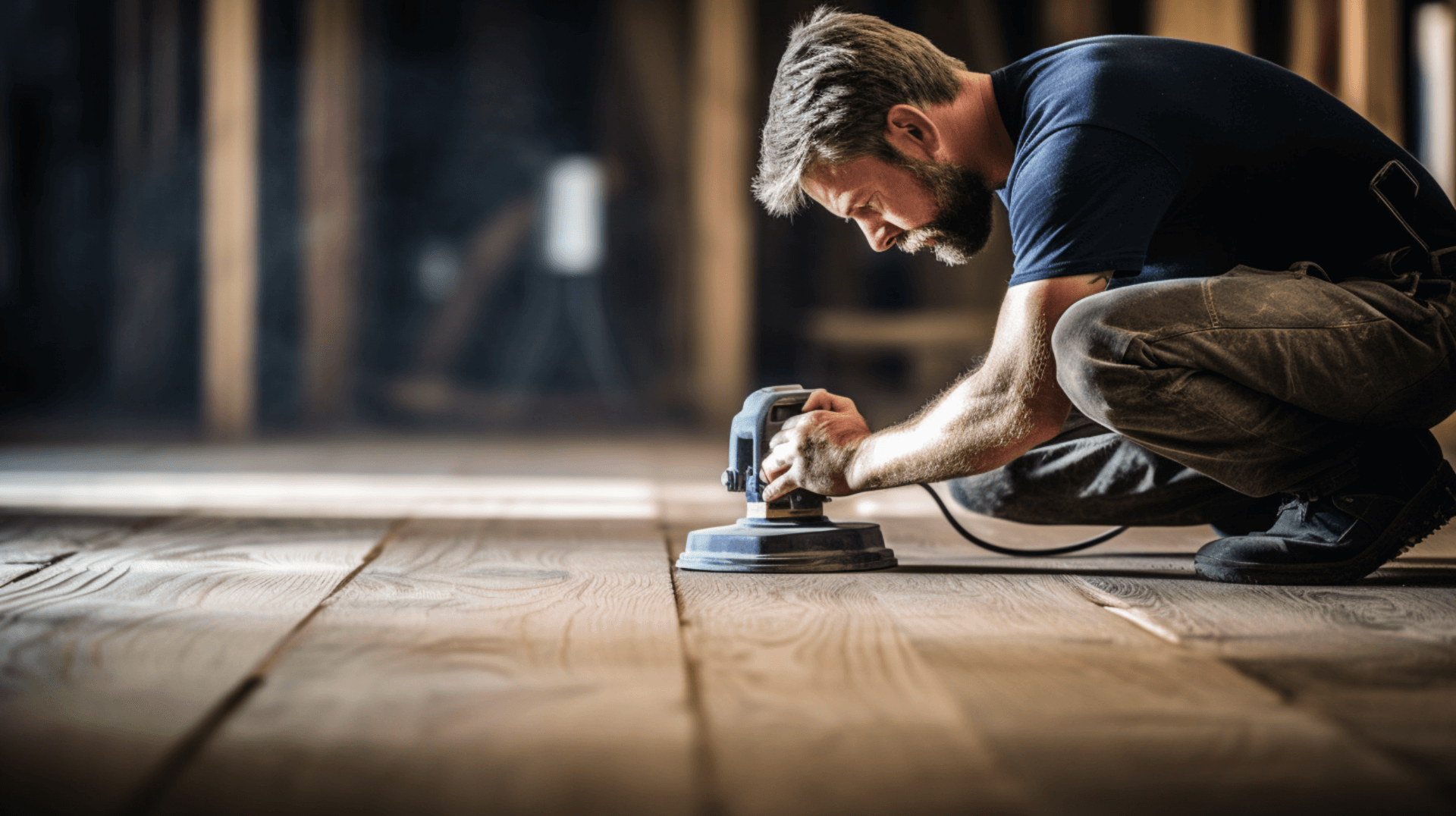
The Refinishing Process: Techniques and Materials
When refinishing a wooden floor, it is important to choose the right type of finish and use the correct techniques to ensure the best results. The most common types of finishes used for wooden floors are wax, oil, and polyurethane.
Wax finishes provide a natural, matte look and are easy to apply. They are also relatively inexpensive and provide a good level of protection. wax finishes may require more frequent reapplication and are not as durable as oil or polyurethane finishes.
Oil finishes are more durable than wax and provide a natural, matte look. They are also more resistant to scratches and scuffs. Oil finishes are easy to apply and provide good protection against wear and tear. they may require more time for proper application and drying.
Polyurethane finishes are the most durable and provide the highest level of protection. They are also resistant to water and other liquids, making them ideal for high-traffic areas. Polyurethane finishes are available in a variety of sheens, from matte to high gloss.
When applying a finish, it is important to use the correct techniques. For wax finishes, it is best to apply the wax in thin, even coats using a soft cloth or brush. For oil finishes, it is best to apply the oil in thin, even coats using a brush or roller. For polyurethane finishes, it is best to apply the finish in thin, even coats using a brush or roller. It is important to allow each coat to dry completely before applying the next coat.
By choosing the right finish and using the correct techniques, you can ensure that your wooden floor is beautifully refinished and protected for years to come.
The Role of Professionals in Sanding and Refinishing Wooden Floors

Hiring professionals for sanding and refinishing wooden floors offers several benefits for home owners and business owners. professionals have the experience and expertise to properly prepare the floor, sand it to a smooth surface, and apply the chosen finish. They also have access to the latest sanding equipment and techniques, which can help achieve the best possible results. This ensures a high-quality finish that is durable and long-lasting.
Professionals can also ensure the quality and longevity of the finish by identifying any potential problems with the floor, such as cracks or damage, and providing advice on the best type of finish to use. They can also make any necessary repairs before sanding and refinishing, ensuring that the floor is in the best condition possible. Additionally, professionals can advise on the proper techniques for applying the finish and can help maintain the floor to keep it looking its best for years to come.
GJP Floor Sanding offers a range of services in relation to sanding and refinishing wooden floors. Our experienced team of floor sanders can help prepare the floor, sand it to a smooth surface, and apply the chosen finish. We offer a range of finishes, including wax, oil, and polyurethane, to suit any budget and style. Additionally, we provide advice on the best type of finish for the floor and the proper techniques for applying it. With our expertise and services, home owners and business owners can trust GJP Floor Sanding to deliver a high-quality finish that will last for years.
The Cost of Sanding and Refinishing Wooden Floors
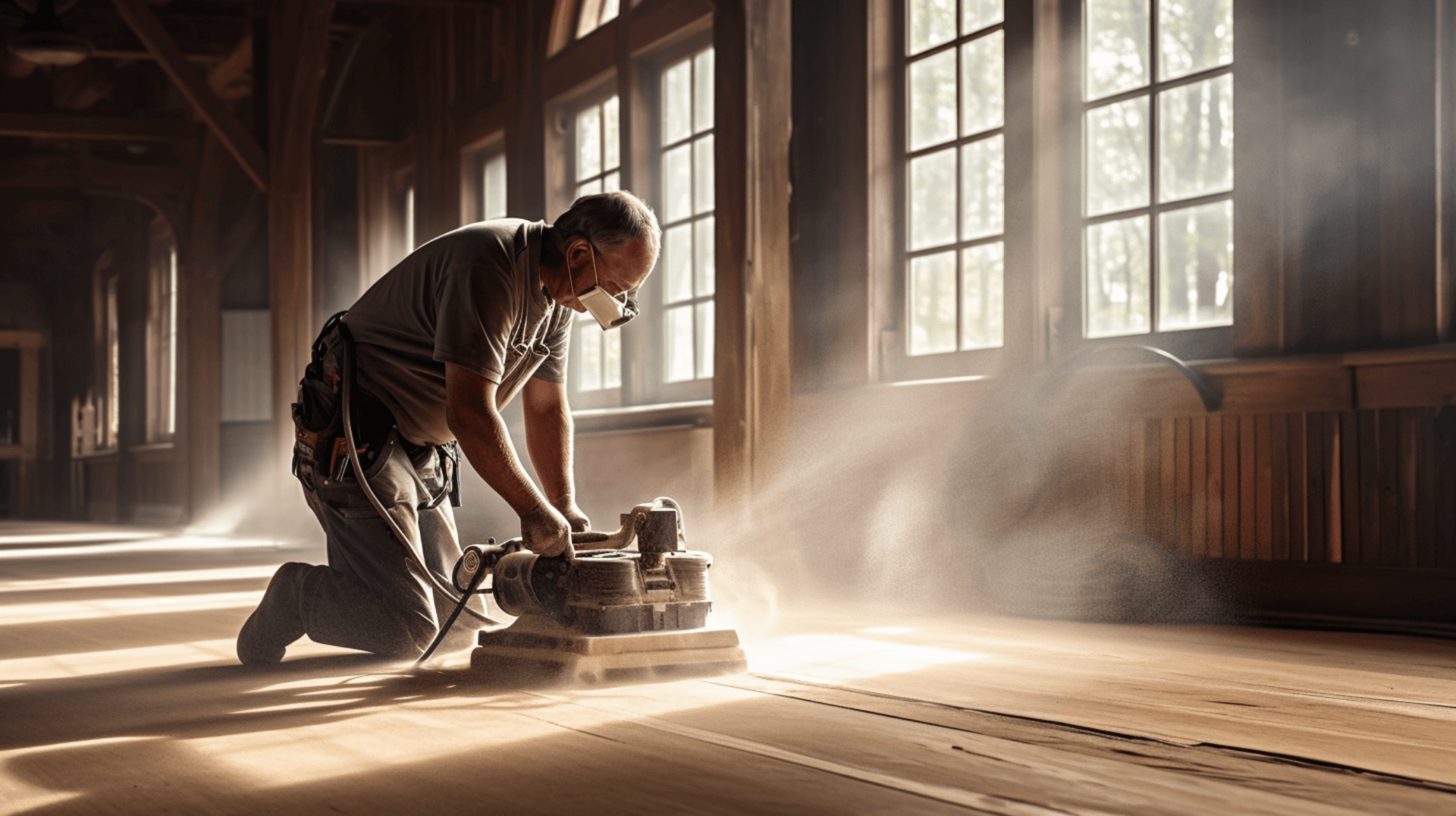
The cost of sanding and refinishing a wooden floor can vary depending on several factors. On average, the cost of sanding and refinishing a standard-sized room, which is approximately 15m2, is around 500-700. larger rooms may cost up to 1,000 or more, while smaller rooms may cost as little as 200-300. The type of finish used can also affect the cost, with oil and polyurethane finishes typically costing more than wax finishes. Additionally, the condition of the floor, the type of wood, and the type of floor construction can all affect the cost of sanding and refinishing a wooden floor. Floors in poor condition may require more sanding and repairs, which can add to the overall cost.
GJP Floor Sanding offers a range of sanding and refinishing services for home owners and business owners. Our experienced team of floor sanders can help prepare the floor, sand it to a smooth surface, and apply the chosen finish. We offer a range of finishes, including wax, oil, and polyurethane, to suit any budget and style. Our services are priced based on the size of the floor area, the condition of the floor, the type of wood, and the chosen finish. By considering these factors, we can provide accurate and competitive pricing for our services.
Maintaining Your Wooden Floors PostSanding and Refinishing

Maintaining your wooden floors after sanding and refinishing is essential to ensure that they remain in good condition and last for years to come. To keep your wooden floors looking their best, it is important to use the right cleaning methods and products.
For daily cleaning, it is best to use a dust mop or vacuum to remove dirt and debris. For more stubborn stains, a damp mop or cloth can be used with a wood floor cleaner. It is important to avoid using water or harsh chemicals, as these can damage the finish. For waxed floors, it is important to avoid wax buildup under furniture and other light traffic areas. This can be done by applying wax in these spots every other waxing session. Additionally, it is important to never use water-based cleaners on waxed floors, as they can cause water spots.
For non-urethane coated acrylic impregnated floors, it is important to use an untreated mop and never use water or petroleum-based products. The floor should be buffed with a low-speed buffer and a recommended product specifically for white/bleached floors. It is also important to maintain a consistent environment throughout the year to minimize floor movement, using a humidifier or losing moisture.
To protect your wooden floors from scratches and scuffs, it is recommended to place felt pads on the bottom of furniture legs and use rugs or mats in high-traffic areas. Avoid dragging furniture across the floor to prevent scratches.
As for the frequency of sanding and refinishing, it depends on the amount of traffic and wear and tear your wooden floors experience. On average, wooden floors should be sanded and refinished every 3-5 years. it is important to regularly inspect your floors for signs of wear and damage and refinish them as needed.
By following these maintenance tips and properly caring for your wooden floors, you can ensure that they remain in great condition and continue to enhance the beauty of your space.
Common Mistakes to Avoid When Sanding and Refinishing Wooden Floors

Common Mistakes to Avoid When Sanding and Refinishing Wooden Floors:
When sanding and refinishing wooden floors, homeowners can make several common mistakes that can lead to costly repairs and a poor-quality finish. These mistakes include using the wrong type of sandpaper, sanding the floor too aggressively, not allowing the finish to dry completely before applying the next coat, and not properly preparing the floor before sanding.
To avoid these mistakes, it is important to use the right type of sandpaper and sanding equipment for the job. Using the correct sandpaper grit sequence, starting with a coarse grit and gradually moving to a finer grit, will help achieve a smooth and even finish. It is also important to sand the floor in the correct direction, following the wood grain, to avoid unsightly swirl marks.
Properly preparing the floor before sanding is crucial. This includes removing all furniture and rugs from the room, cleaning the floor to remove dirt and debris, and inspecting for any damage that needs to be repaired. Additionally, it is important to protect the house from floor sanding dust by covering vents and sealing off the work area.
Taking safety precautions is also essential. Wearing protective clothing, such as goggles, gloves, and a dust mask, will help protect against dust and debris. Ensuring proper ventilation in the room and grounding any electrical equipment will also contribute to a safe working environment.
GJP Floor Sanding can help prevent these mistakes by providing experienced floor sanders with the latest sanding equipment and techniques. Our team of professionals can ensure that the floor is properly prepared, sanded to a smooth surface, and finished correctly. We can also provide guidance on the best type of sandpaper, sanding sequence, and finish to use for optimal results. With our expertise, homeowners and business owners can avoid common mistakes and achieve a high-quality finish for our wooden floors.
Expert Advice from GJP Floor Sanding
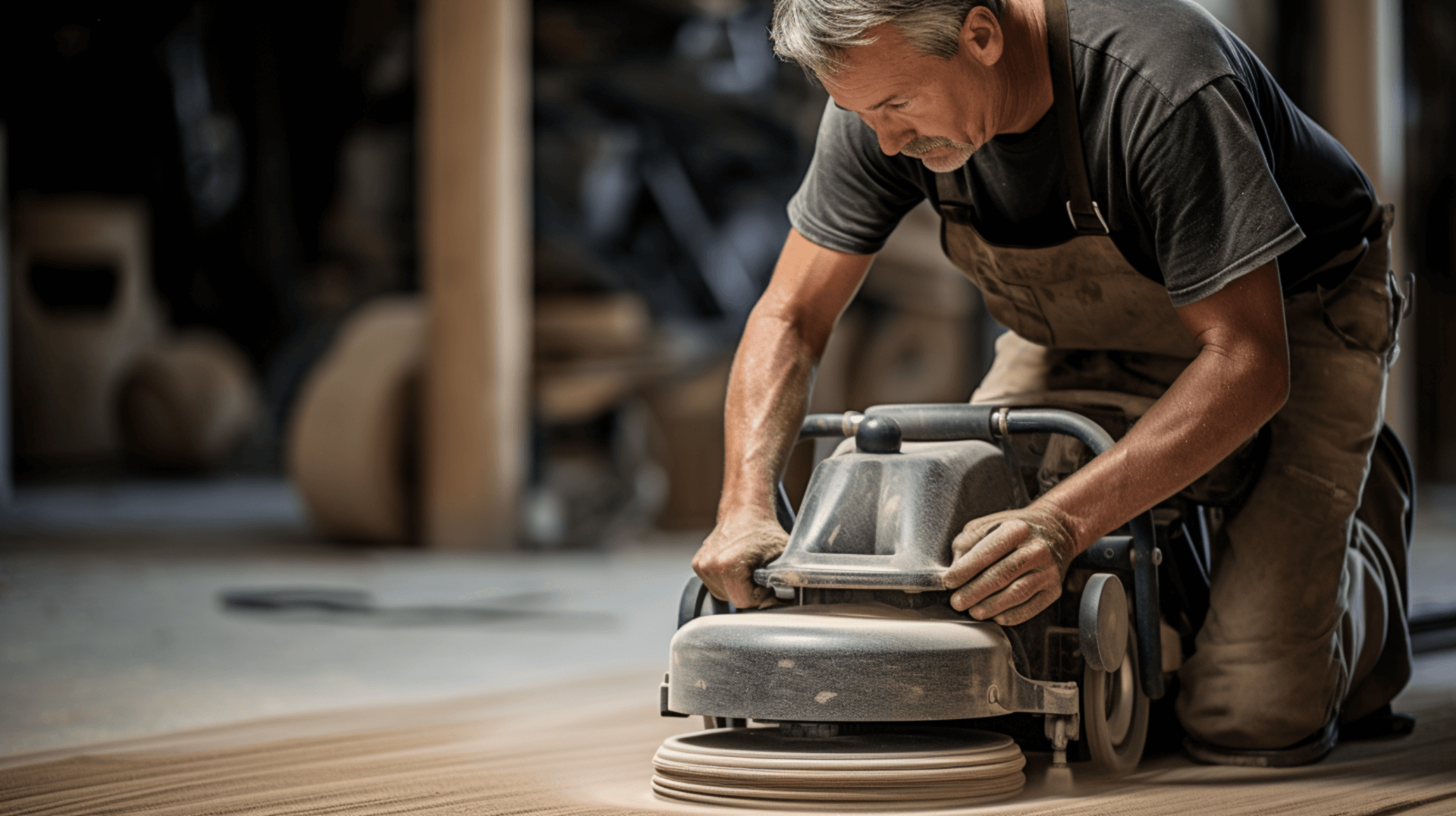
GJP Floor Sanding provides expert advice for homeowners and business owners considering sanding and refinishing our wooden floors. Our experienced team of floor sanders can provide guidance on the best type of sandpaper, sanding sequence, and finish to use for optimal results. We can also advise on the proper techniques for applying the finish and can help maintain the floor to keep it looking its best for years to come.
GJP Floor Sanding can provide unique insights based on our experience in the industry. We can identify any potential problems with the floor, such as cracks or damage, and provide advice on the best type of finish to use. We can also make any necessary repairs before sanding and refinishing, ensuring that the floor is in the best condition possible. Additionally, we can advise on the proper techniques for applying the finish and can help maintain the floor to keep it looking its best for years to come.
GJP Floor Sanding also offers competitive pricing for our services. Our prices are based on the size of the floor area, the condition of the floor, the type of wood, and the chosen finish. By considering these factors, we can provide accurate and competitive pricing for our services.
Overall, GJP Floor Sanding’s expert advice and unique insights can help homeowners and business owners achieve the best possible results when sanding and refinishing our wooden floors.
Contact GJP Floor Sanding for Your Sanding and Refinishing Needs
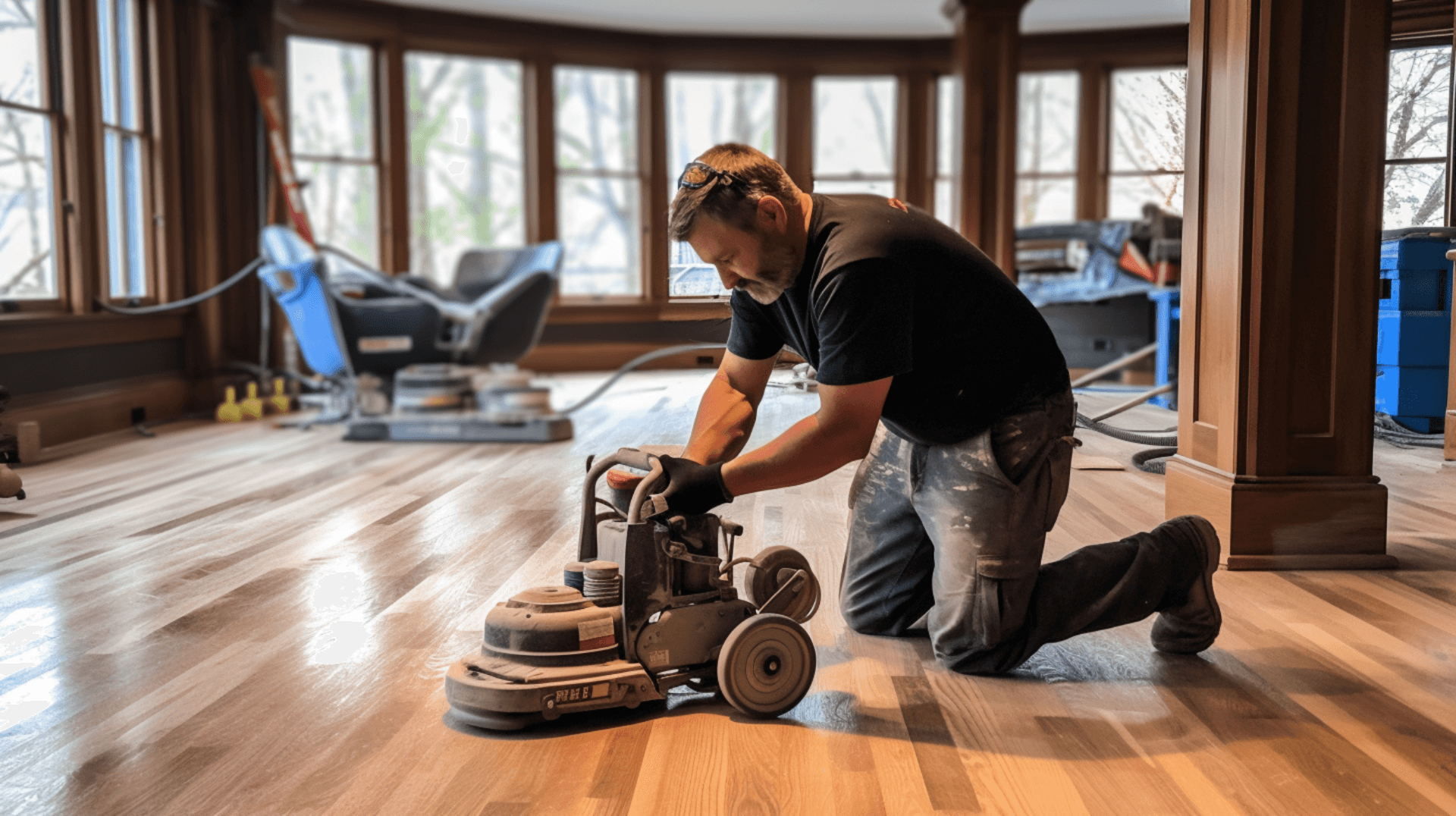
To contact GJP Floor Sanding for your sanding and refinishing needs, you can call us on 01924 822 822 or email us at sales@gjpfloorsanding.com. When contacting them, it is important to provide information about the size of the floor area, the condition of the floor, the type of wood, and the chosen finish. This will help us provide accurate and competitive pricing for our services.
GJP Floor Sanding offers a range of services and expertise that make us the ideal choice for sanding and refinishing wooden floors. Our experienced team of floor sanders can help prepare the floor, sand it to a smooth surface, and apply the chosen finish. We offer a range of finishes, including wax, oil, and polyurethane, to suit any budget and style. Additionally, we can advise on the proper techniques for applying the finish and can help maintain the floor to keep it looking its best for years to come.
Choosing GJP Floor Sanding for your wooden floor sanding and refinishing needs offers several benefits. Our experienced team of professionals can ensure that the floor is properly prepared, sanded to a smooth surface, and finished correctly. We have access to the latest sanding equipment and techniques, ensuring a high-quality finish that is durable and long-lasting. With our expertise and services, home owners and business owners can trust GJP Floor Sanding to deliver a high-quality finish that will last for years.
